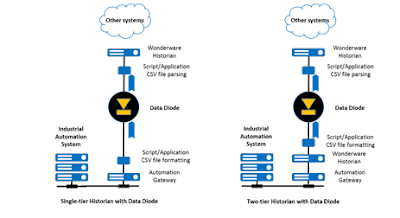For the last couple of weeks Stan and I have been working with a number of leading companies in Oil and Gas, Mining, and F & B around their Operational Landscape or experience of the future.
Too often the conversations start off from a technology point, and we spend the initial couple of days trying to swing the conversation to the way in which they need to operate in the future and what their plans are around operations.
It becomes clear very quickly that there is allot of good intent, but real thought into how they need to operate in order to meet production expectations both in products and margin has not been worked through.
Over and over again we see the need for faster decisions, in a changing agile world, and this requires an "understanding of the future" this maybe only 1/2 hour. The time span of future required for decisions depends on role, (same as history) but it is clear that modeling of future is not just something for the planner, it is will become a native part of all operational systems.
This blog from Stan captures some of the necessary concepts.
Operations management systems must deliver better
orientation than traditional reporting or decision support systems. One important aspect of operations is the
dynamic nature – there will be a journey of changing schedules, changing raw
material capabilities, changing product requirements and changing equipment or
process capabilities.
It might be helpful to consider desired and undesired
conditions, using the analogy of driving a car on a long trip. The planned route has turns, and it may
involve traffic jams, detours, poor visibility due to heavy rain or fog; the
driver and the car must stop periodically; and the driver may receive a
telephone call to modify the route. The
following diagram is a sketch which displays how an integrated view might
appear:
In the above example, the actual performance is at the upper
limit for the target, and the scheduled target and constraints will shift
upward in the near future. The
constraint is currently much higher than the scheduled target limits, but it is
forecast-ed to change so that in some conditions in the future, the constraint will
not allow some ranges of targets and limits. This simple view shows a single operations
measure with its associated constraints and target.
- At this stage, we propose a definition of “forecasting”: a future trend which is a series of pairs of information, where the pairs include a value and a time. The accuracy of the values will be poorer as the time increases, but the direction of the trend (trending down or up, or cycling) and the values in the near future are sufficiently useful.
- In contrast, “predicting” is an estimate that a recognized event will likely happen in the future, but the timing is uncertain. This is useful for understanding “imminent” failures.
The following diagram shows an example of estimating the
probabilities of 5 failure categories, where the first (rotor thermal
expansion) is the most likely.
Given these two definitions, it is helpful to consider
industrial equipment behaviors.
- Several types of equipment, especially fixed equipment such as heat exchangers, chillers, fired heaters etc. exhibit a gradual reduction in efficiency or capacity, or exhibit varying capability depending upon ambient temperature and the temperature of the heat transfer fluid (e.g. steam, hot oil, chilled water). While the performance is changing, the equipment hasn’t failed, although its performance might reach a level which justifies an overhaul. In extreme cases, sudden failures can occur, such as tube rupture or complete blockage. These benefit from “forecasting”.
- Other types of equipment, such as agitators, pumps, turbines, compressors etc. exhibit sudden failures. These benefit from “predicting”.
One analogy of incorporating both “forecasting” and
“predicting” is that it is like driving a car without looking forward through
the windshield/windscreen, such as shown in the following sketch:
In the above sketch, the road behind the car is clear, but
ahead, a potential collision will occur.
High-performance operations requires that teams prevent unplanned
shutdowns or other events.










